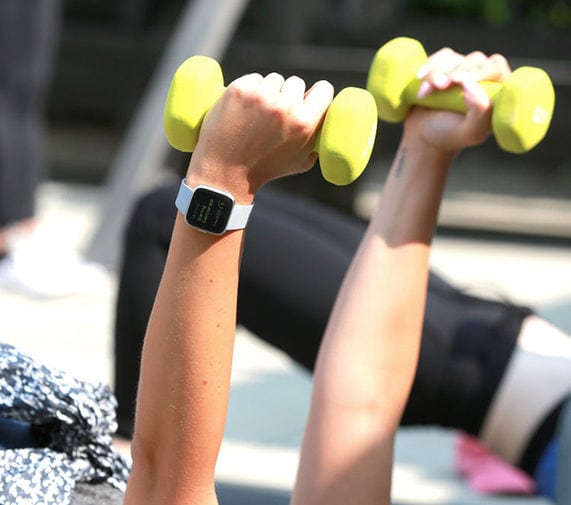
Wellness
Gadgets to Help Track Your Metabolism and Lose Weight
Recent studies on metabolism have made it easier to understand what it takes to maintain a healthy body weight. For example, National Institutes of Health researchers tracked 14 contestants from Season 8 of The Biggest Loser. They found that six years later, all but one had regained a good deal, if not more, of the weight they’d lost. Their resting metabolic rate (RMR) had plummeted. RMR is the process that determines how many calories are burned when you’re at rest. Losing weight on a fad or extreme diet is easy. Keeping it off is hard. But there’s good news! There are now gadgets and machines (that don’t cost a gazillion dollars) to help you monitor and master your metabolic rate. Set yourself up for a fitness win.
“Managing somebody’s weight is so multifactorial. Underlying issues, food and lifestyle habits need to be addressed. RMR is another piece we can give them,” says Dr. Alexis Peraino, an internal and obesity medicine specialist at the California Health & Longevity Institute (CHLI).
It’s easier to understand your nutrition and fitness needs once you know your RMR, she explains. Knowing how many calories you burn in a day gives you an excellent blueprint for how much you can eat to achieve/maintain your ideal weight. “People don’t understand the amount of calories they’re consuming,” says Dr. Peraino. “There’s a lot of evidence that one of the most effective means for maintaining weight loss is continuing to keep a dietary record and structure.”
A Quick RMR /BMR Primer
RMR and Basal Metabolic Rate (BMR) are often used interchangeably. BMR is a more accurate and scientific measurement taken under stricter conditions, often in a lab. RMR/BMR normally represents about 70% of your daily energy/calorie expenditure.
Metabolic rate factors include age, gender, thyroid function and your amount of metabolically active lean body mass (muscle). Simply put, muscle burns more calories at rest than fat does.
Build muscle by eating adequate protein and developing a resistance training practice. It doesn’t have to be weightlifting. Exercises such as Pilates, yoga and ballet-barre classes can do the trick too. Also try High Intensity Interval Training (HIIT). HIIT combines muscle-building anaerobic exercise (such as Pilates) with aerobic exercise (like running). Studies indicate HIIT spikes your metabolism.
Calculate Your BMR/RMR
Online: BMR/RMR calculators, such as The Harris-Benedict Equation, give useful approximations for individuals with average lean body masses. Find it at the Cornell University Medical College website and elsewhere.
At the doctor’s office: For more accurate BMR/RMR results—hospitals, primary physician, and health and wellness spas and retreats offer RMR testing. CHLI, for example, also provides Body Composition (BOD POD) testing to calculate lean/fat body mass, VO2 Metabolic Testing and more.
Even in the mall: The company mPort does 3D Body Mapping. Its equipment is available across the country, in places such as malls. You walk into a large pod, a machine scans your body, then gives your RMR and other information in minutes. It’s really incredible. You can download the app to monitor your progress.
Or get help with at-home gadgets: Lumen, a gadget you can use at home, measures the amount of CO2 in your breath to help analyze your metabolism. Various smart scales track your muscle mass and other metabolism-related data. Fitbit Aria 2 Smart Scale, Nokia Body Composition Smart Scale, Garmin Index Smart Scale, and QardioBase Smart Scale are good options.
Of course there are also our beloved smart watches to help count calories burned: see Apple Series 4, Fitbit Ionic, Samsung Gear Sport and Polar Fitness Tracker.
Once you master your metabolism and related information, you don’t necessarily have to work out harder—just smarter.
twistup
Love OrangeTwist? Join our twistup membership and receive a $100 gift card today!


